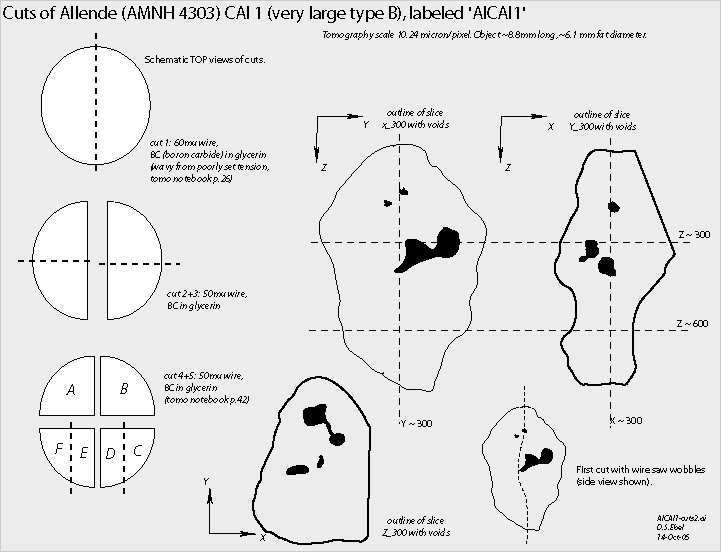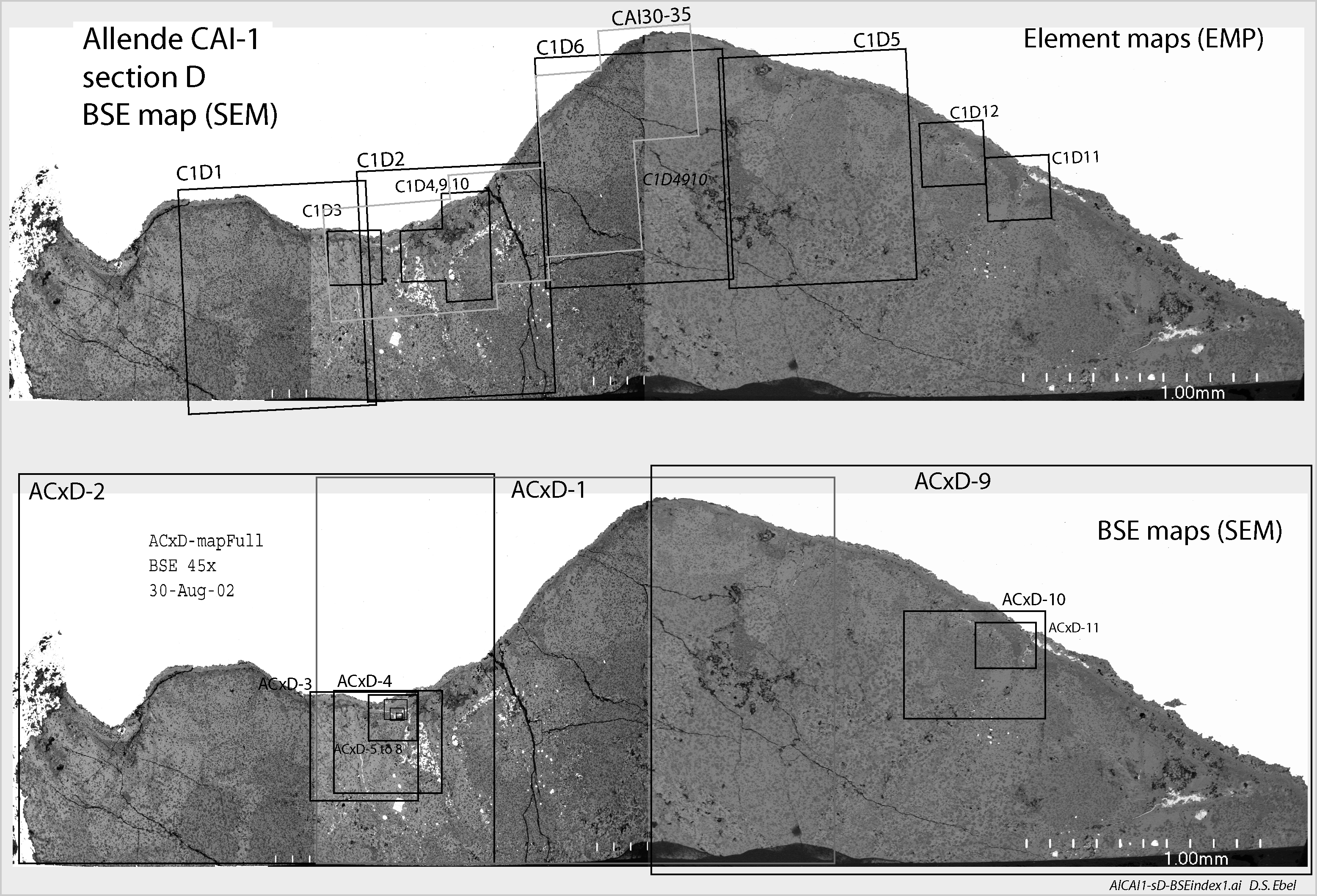

 |
Index (links) for whole and sub-pieces: tomography of whole object Section A Section B Section C Section D |
 Large version of index map (TIFF 300dpi). |
Sub-regions (x-ray EMP maps):
C1D2 (_ mu, 512?): BSE, Al, Fe, Ti, Ca, Mg,... MCA, TCA C1D3 (_ mu, 512?): BSE, Al, Fe, Ti, Ca, Mg,... MCA, TCA C1D4 (_ mu, 512?): BSE, Al, Fe, Ti, Ca, Mg,... MCA, TCA C1D5 (_ mu, 512?): BSE, Al, Fe, Ti, Ca, Mg,... MCA, TCA C1D6 (_ mu, 512?): BSE, Al, Fe, Ti, Ca, Mg,... MCA, TCA C1D9 (_ mu, 512?): BSE, Al, Fe, Ti, Ca, Mg,... FTC, MCA, TCA C1D10 (_ mu, 512?): BSE, Al, Fe, Ti, Ca, Mg,... MCA, TCA C1D11 (_ mu, 512?): BSE, Al, Fe, Ti, Ca, Mg,... MCA, TCA C1D12 (_ mu, 512?): BSE, Al, Fe, Ti, Ca, Mg,... MCA, TCA CAI31: BSE, Al, Fe, Na, Ca,... SCF CAI32: BSE, Al, Fe, Na, Ca,... SCF CAI33: BSE, Al, Fe, Na, Ca,... SCF CAI34: BSE, Al, Fe, Na, Ca,... SCF CAI35: BSE, Al, Fe, Na, Ca,... SCF |